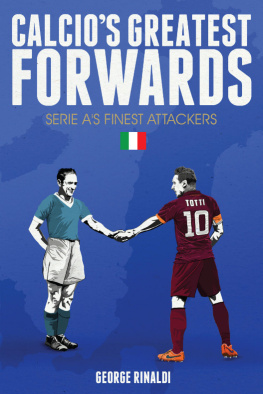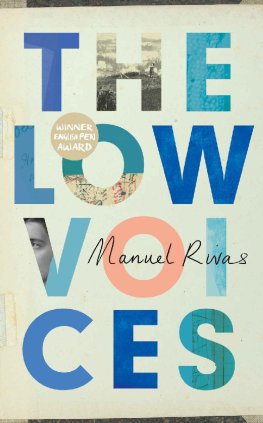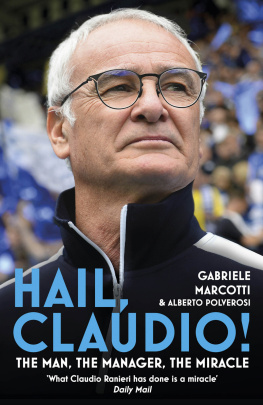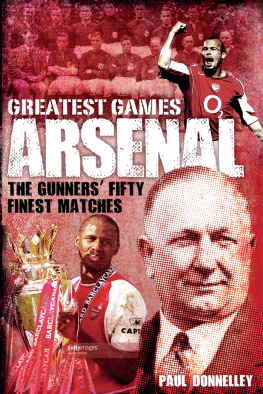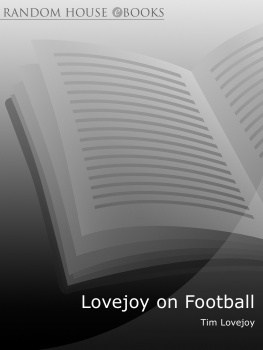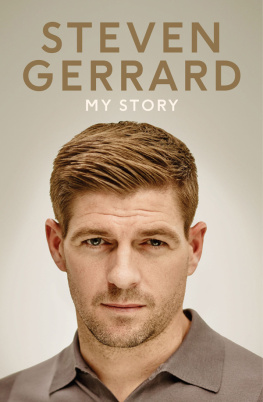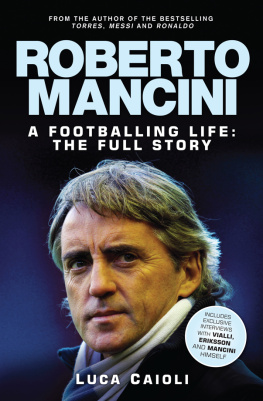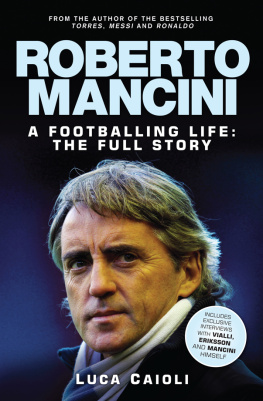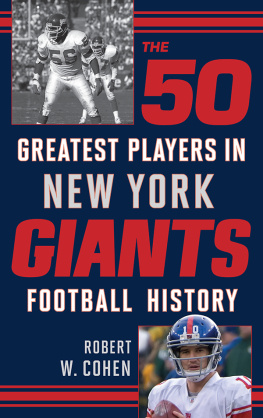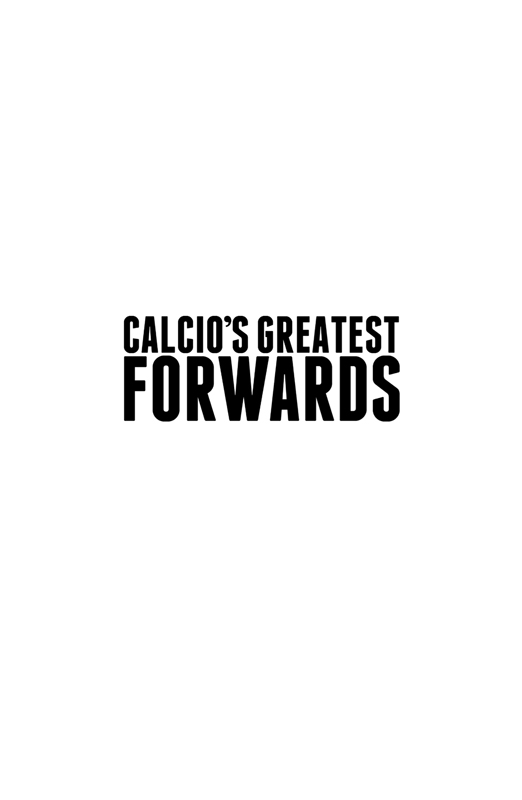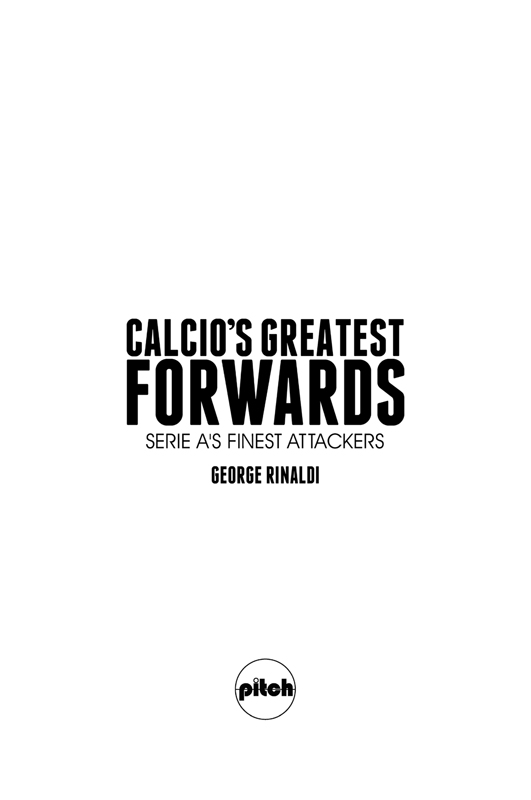First published by Pitch Publishing, 2016
Pitch Publishing
A2 Yeoman Gate
Yeoman Way
Durrington
BN13 3QZ
www.pitchpublishing.co.uk
George Rinaldi, 2016
All rights reserved under International and Pan-American Copyright Conventions. By payment of the required fees, you have been granted the non-exclusive, non-transferable right to access and read the text of this e-book on-screen. No part of this text may be reproduced, transmitted, downloaded, decompiled, reverse-engineered, or stored in or introduced into any information storage and retrieval system, in any form or by any means, whether electronic or mechanical, now known or hereinafter invented, without the express written permission of the Publisher.
A CIP catalogue record is available for this book from the British Library
Print ISBN 978-1-78531-118-5
eBook ISBN: 978-1-78531-155-0
--
Ebook Conversion by www.eBookPartnership.com
CONTENTS
ABOUT THE AUTHOR
George Rinaldi is a 21-year-old sports journalist currently covering European football while mainly focusing on Italys Serie A. He is currently writing for Football Italia and Forza Italian Football, and is also freelancing across multiple publications. These include most recently FourFourTwo in the UK, Howler magazine in the United States, and Soccer360 magazine. He is a supporter of English side Wolverhampton Wanderers and Italian club Fiorentina, attending his first match back in 2011 a rather typical 0-0 draw at the Stadio Artemio Franchi versus Sampdoria.
ACKNOWLEDGEMENTS
T HIS was a project that would never have taken shape without the help of some of the finest football journalists and writers around, alongside working with a fantastic publishing firm and some very talented illustrators.
Firstly we come to Giancarlo Rinaldi. Despite sharing a rather fetching surname and the support of Fiorentina, we really are no relation! This man was able to give me a kick-start in working with Italian football and made me rekindle my love for calcio once again. To top it off, he contributed to the book as well. I would also like to thank Gabriele Marcotti, who took the time out of his hectic schedule to write a fantastic foreword. When you have the backing of Gab you know youre doing something right.
Of course, I would like to pay thanks to Paolo Bandini, Andy Brassell, Susy Campanale, Adam Digby, John Foot, Richard Hall, James Horncastle, Antonio Labbate and Dov Schiavone for contributing with player introductions, transforming a good read into a truly superb read. Their insight into a player they feel a connection with gives a great start to certain sections. Im also indebted to the help of Sophie Rees. Her proofreading of a subject shes not too fussed about sorted out all the blundering errors I had made!
As for the illustrations, I come to Steve Welsh first, who turned my rather complicated book cover into a beautifully constructed piece. It sells the book for its look alone. Next, I give my thanks to Josh Clifford, who added a great style to the final product with an excellent portrait illustration of each player to begin their segments. I must also give a big thanks to Paine Proffitt. His truly unique artwork for the older generation of players dotted around the book adds to that special nostalgic feel for those players.
Finally, I would like to give a huge thanks to those who have helped me secure much needed accuracy for the book. Steve Amoia, publisher of soccertranslator.com from 2008 to 2015 and worldfootballcommentaries.com since 2006, was a valuable help as he gave precise translations of certain quotes used throughout. Next up we have Emanuele Giulianelli, who discussed his interview with Kurt Hamrin to help me give a more detailed outlook on the Swedes career path.
I would also like to give thanks to Bo Berglind for his fantastic help discussing with me his website and current ongoing project at gunnar-nordahl.com. With Bos help, I was able to write about details in Nordahls life that not many have seen before, including quotes from his own book.
The archives of La Repubblica, La Stampa, La Gazzetta dello Sport and Corriere della Sera were vital as research points throughout the history of calcio and without them, there would be no book. The Storie di Calcio website was just as important, giving a great rundown of the older generations of players. Although I may not be able to thank the above publications personally, I am forever indebted to them for their help.
Honestly, I couldnt have asked for a better set of people to have worked with.
George Rinaldi
FOREWORD
H AD Friedrich Nietzsche been born a century later, he might have found a home in calcio. Or, at least, empirical evidence of some of his ideas. And maybe none more so than his oft-quoted maxim, That which does not kill us only makes us stronger.
The Italian games capacity for self-harm over the years has been near limitless. And its particularly true when it comes to forwards. No footballing culture has made life more difficult for the men charged with scoring.
Gianni Brera, Italys most celebrated football chronicler, famously described the perfect game as one that finishes 0-0, in which the two sides technical, tactical and mental prowess leads to no mistakes and no goals.
Thats right. Because the underlying assumption is that if you do your job, if you dont make an error, your opponent wont score. Every goal is a product of a mistake because every goal can be avoided.
When unstoppable force meets immoveable object, the result is a stalemate. Or, put another way, the immoveable object wins.
Those are the conditions that with some exceptions historically defined the Italian game. And thats what yielded not just the stifling tactical approaches, cynical, in-your-shorts defending and primo non prenderle above all, dont get beat mentality, but also the risk-averse mentality of fans, media and coaches.
To succeed in that environment you need to produce something truly exceptional. And Italian football has, time and again, succeeded in doing that. In a footballing culture usually so focused on the collective as a defensive weapon (at least until Arrigo Sacchi), it was perhaps inevitable that the Italian game would need forwards who could create out of nothing, who would not need to rely on service and schemes or who were blessed with unusual strength and athleticism or who simply had that indefinable quality to be in the right place and punish mistakes. When its Man v Machine, you need a special man to bust the defensive machine.
And thats what calcio did. From Roberto Baggio to Francesco Totti, from Christian Vieri to Gigi Riva and from Pippo Inzaghi to Benito Lorenzi, Italian strikers have mostly fallen into one of those three categories. Its not enough to be a virtuoso blessed with superb technique. Strikers like that abound in other leagues and, on good, attacking teams, they score plenty of goals. But in Serie A, in addition to the skill you need that extra: whether its outstanding vision and creativity, freakish athleticism or the single-minded selfishness of the natural-born goalscorer.
George Rinaldi has brought together these different figures in this book. Its a labour of love and a celebration of the legends who thrived with the odds stacked against them in a culture that still seems more comfortable with the men at the other end of the pitch. Thats why, to paraphrase Jovanotti, Italian forwards are

